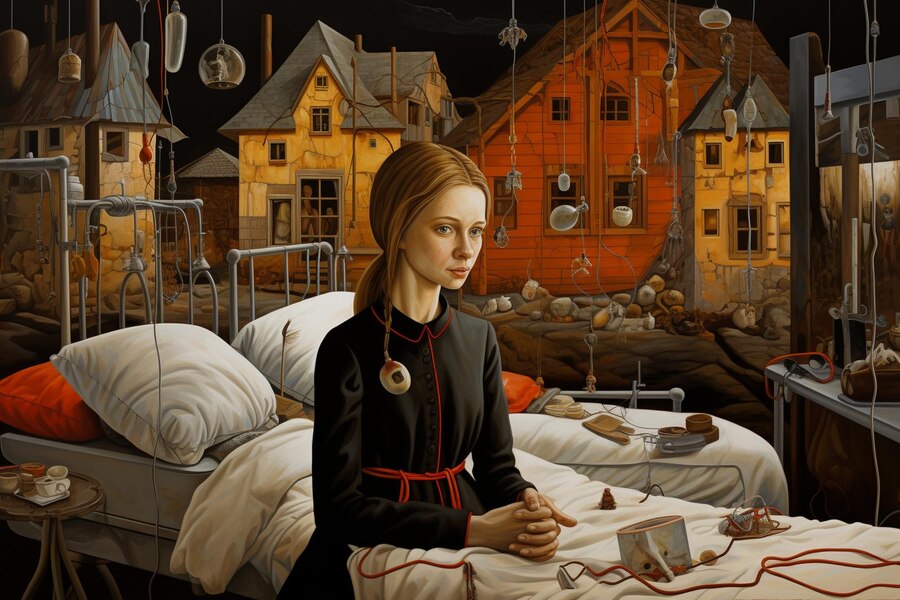In Mary Shelley’s time, early 19th-century England, society was experiencing significant social, scientific, and political change. The contextual themes relevant to her society would likely involve a mix of issues like scientific advancement, Romanticism, industrialization, and social reform. Here’s a detailed table showcasing some of the key themes relevant to her society:
Table: Contextual Themes Relevant to Mary Shelley’s Society
| Theme | Relevance to Mary Shelley’s Society | Examples |
|---|---|---|
| Scientific Advancement | The early 19th century saw rapid developments in science, particularly in the fields of medicine, biology, and electricity. This was also the period of Enlightenment, which emphasized reason and scientific thought. Mary Shelley herself was influenced by debates about the boundaries of science, morality, and the potential dangers of unchecked scientific progress. | Mary Shelley’s novel Frankenstein (1818) explores the dangers of scientific hubris, as Victor Frankenstein creates life without considering the consequences. |
| Romanticism | Romanticism was a reaction against the rationalism of the Enlightenment. It celebrated emotion, nature, individualism, and the sublime (awe-inspiring nature). Shelley’s writing reflects Romantic ideals, emphasizing human emotion, isolation, and the uncontrollable forces of nature. | Mary Shelley was part of the Romantic movement, and Frankenstein itself reflects elements of Romanticism, particularly in its exploration of nature, isolation, and the limits of human knowledge. |
| Industrialization | The Industrial Revolution was transforming British society, bringing economic change but also creating concerns about dehumanization, exploitation of labor, and environmental degradation. The contrast between industrial progress and the natural world was a major theme for Romantic writers. | The rise of machinery and industrial factories led to social dislocation, labor exploitation, and environmental concerns. Shelley’s works often reflect anxieties about dehumanization and isolation. |
| Social Reform and Class Tension | Shelley’s society was witnessing growing calls for social reform, particularly concerning the rights of the working class, women’s rights, and the abolition of slavery. The increasing gap between the rich and the poor also sparked political debate. | The Peterloo Massacre (1819) exemplified class tensions and the struggle for workers’ rights. Mary Shelley was an advocate for women’s rights and criticized social inequality in her writings. |
| Human vs. Nature | In a time of growing industrialization, there was a strong Romantic focus on the relationship between humans and nature, as well as fears about the loss of connection to the natural world. Shelley’s works often depict nature as powerful and indifferent to human ambitions, contrasting it with human fragility. | In Frankenstein, the natural world serves as a backdrop to Victor Frankenstein’s struggles, often representing both solace and the uncontrollable forces of life. |
| Gothic Themes | Gothic literature was popular in the late 18th and early 19th centuries. Themes of horror, the supernatural, and psychological exploration were prominent. Mary Shelley’s Frankenstein incorporated Gothic elements such as the eerie atmosphere, dark settings, and the exploration of fear and madness. | Frankenstein is a classic Gothic novel, featuring an isolated protagonist, a monstrous creation, and themes of horror and death. |
| Philosophy of the Individual | Individualism, a key part of Romanticism, became increasingly relevant. The rights and responsibilities of the individual, the role of personal conscience, and the limits of individual freedom were being discussed in both political and philosophical circles. | Victor Frankenstein’s pursuit of personal glory at the expense of moral responsibility highlights the dangers of extreme individualism. |
| Moral Responsibility in Science | As science and technology advanced, moral questions about the limits of human experimentation and the ethical responsibilities of scientists became central to intellectual debates. Shelley’s Frankenstein explores the moral responsibilities that come with creation and discovery. | Frankenstein deals directly with this theme as Victor Frankenstein fails to take responsibility for the consequences of his scientific creation, leading to tragic results. |
Detailed Execution of Themes in Frankenstein:
- Scientific Advancement: Shelley’s depiction of Victor Frankenstein’s scientific endeavors reflects the society’s fascination and fear of rapidly advancing science, especially biology and electricity (influenced by Luigi Galvani’s work on animal electricity).
- Romanticism: The novel’s deep focus on nature, isolation, and emotional intensity mirrors the Romantic fascination with the sublime. Nature acts as a refuge but also as an uncontrollable force.
- Industrialization: Though not overtly about industrialization, the novel reflects anxieties of the time—concerns about dehumanization and overreach into natural processes.
- Gothic Elements: Shelley infused her novel with dark and eerie settings, and an overarching mood of horror and existential dread. The theme of creation turning against its creator is a classic Gothic horror trope.
- Moral Responsibility: Victor’s failure to consider the consequences of his scientific creation echoes societal concerns about the ethical limits of science and technology.
These themes would have resonated with Shelley’s contemporaries, reflecting their experiences and anxieties in a time of immense change.

